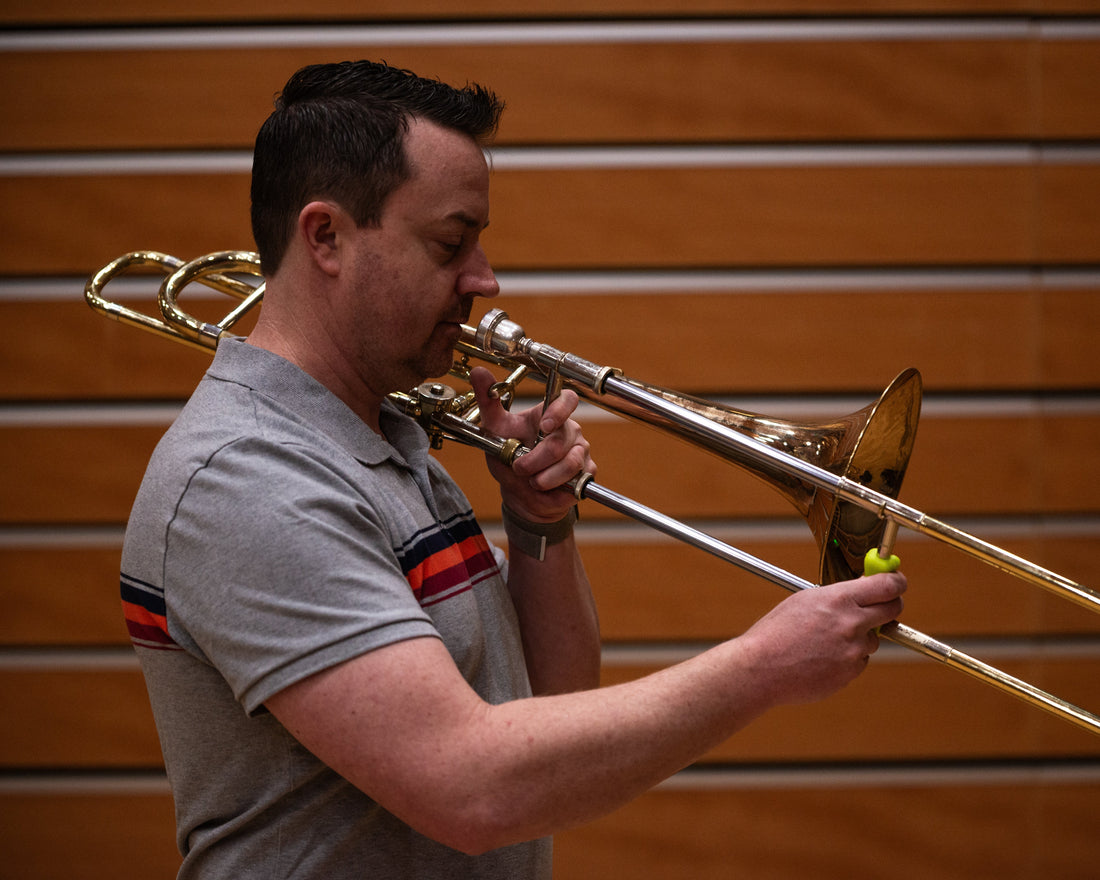
Introducing the Trombone Thumb Gummi
Share
If you’ve ever taught beginning trombone players, you know the drill: awkward grips, flying elbows, and right hands that just can’t seem to figure out where to go. Unlike the trumpet or other brass instruments, trombone’s long slide distracts students from developing a solid grip—and let’s face it, it is the cornerstone to great trombone technique.
The Dilemma
Trombone players, especially beginners, tend to grip the instrument in all sorts of creative (and incorrect) ways. Some clamp down for dear life, others play tag with the slide grip, and plenty twist their wrist into positions that make band directors cringe.
Enter the Trombone Thumb Gummi

The Trombone Thumb Gummi is a soft, durable grip that attaches directly to the trombone’s brace—giving that wandering right hand a designated, comfortable, and effective home. It’s a simple, intuitive solution that gently guides the hand into better playing position. No instruction manual needed. Students just get it.
Designed by brass educators, this tool isn’t just a fix—it’s a fast track to better habits.
Why It Works
The Thumb Gummi works by providing tactile feedback—something the brain can immediately register and adjust to. Instead of constant reminders from teachers—like "relax your wrist" , "It's Italian", "Spock's Vulcan Grip" — the Gummi gives students a physical cue every time they pick up their horn. That leads to:
-
Better posture
-
Less tension
-
A more relaxed, controlled grip
-
And fewer overuse issues down the road
It’s especially useful across all modalities—whether in-person lessons, virtual instruction, marching band rehearsals, or large group sectionals, students are learning in person, online, or in group settings. One tool, universal impact.
Better for Students, Easier for Teachers
For students, this means confidence. They know how to hold their horn from day one, which frees them up to focus on sound and technique—not just logistics.
For teachers, this means fewer interruptions to adjust hand position, and more time spent on actual music-making. It’s like adding a co-teacher to your sectionals—one that quietly corrects without saying a word.
